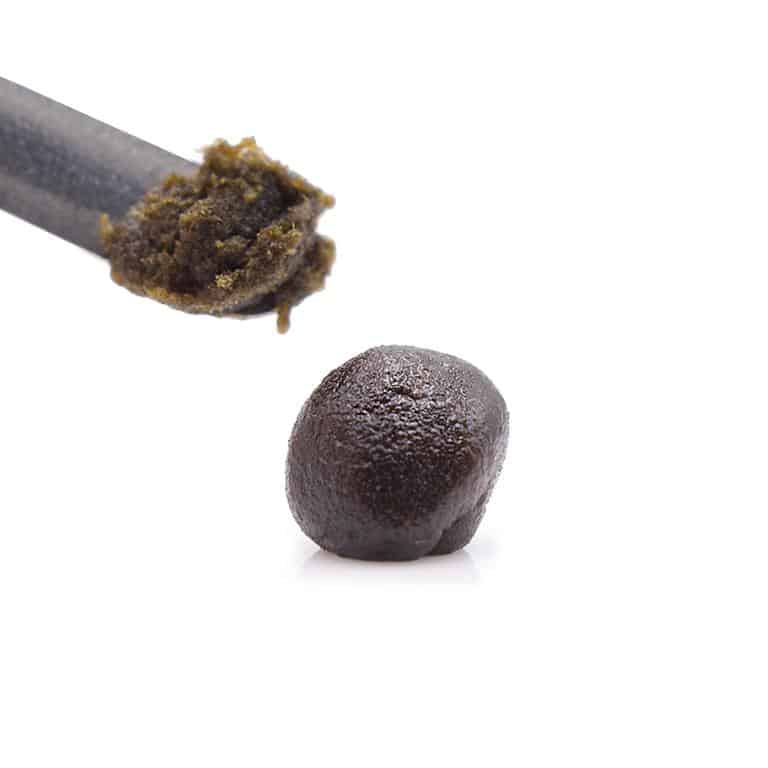
Ever heard of hash? Not talking breakfast hash browns here. It’s hashish, that sticky resinous jewel of the cannabis world. Folks have been using it for centuries. From ancient Asian rituals to European hash bars, it’s got a legacy. These days, hash still holds a special spot in the hearts of cannabis enthusiasts. The way it concentrates all those precious cannabinoids makes hash gold in a nugget or, let’s say, a brick. With various popular extracts like bubble hash, dry sift, or the elegant hash rosin, there’s a lot to love.
This post is intended as information and for general knowledge only. It is not a substitute for medical advice, diagnosis, or treatment. It is recommended that you talk to a healthcare professional about this before introducing cannabinoids into your daily routine (especially if you have been diagnosed with any medical conditions or are under any medication). It is not recommended to drive or operate any machinery when using hemp-derived products. Use responsibly!
Introduction to Hash and its Varieties

Hash. What even is it? Forget the big terms, let’s get simple. Hash is cannabis concentrate. Think of trichomes, those tiny crystals on cannabis buds. When you gather them up and press ‘em together, that’s hash. Historically? It’s been everywhere – Persia, India, the Middle East. Now? Coffee shops in Amsterdam. It’s a crowd favorite. Different types? Yeah, there’s traditional hash, bubble hash, hash rosin, dry sift hash. Traditional hash gets its name from pressing kief into dense blocks. Simple enough. Bubble hash? That’s an ice water affair. Dry sift hash comes from a gentle shake and sift. Hash rosin’s the new player, squeezing the goodness out without any solvents. It’s all about those cannabis concentrates.
Understanding the Basics of Cannabis and Trichomes
Picture a cannabis plant. Really. It’s more than leaves and buds. The magic’s in the trichomes. They’re tiny, but they’ve got the power. Why? Because they produce sticky resin and that lovely thing called cannabinoids. More trichomes mean more potential for expressions in hash. When gearing up for hash production, the cannabis plant material matters. It’s quality over quantity, always. Choose cannabis buds that are loaded with these trichomes.
Equipment and Materials Required for Making Hash
Getting hands-on? Not as simple as dropping buds into a blender. Nope. You need the right equipment: mesh bags, filter bags, parchment paper, a trusty rolling tray. Kief is the star here – that fine powderlike trichome dust. You want it pure. And if you’re feeling adventurous? Look at dry ice or ice water extraction kits. They’re fun and open up new hash-making vistas.
Methods of Making Hash
A. Bubble Hash
Bubble hash is all about the dance of ice water and cannabis. It starts simple – mesh bags, some delightful cannabis. The trick is in the jiggle. Fill the bags, add ice water, and stir like you mean it. This gentle agitation separates the cannabis trichomes beautifully. Cold as it gets, it gets better results. Dry and cure for perfection. It’s art. Taking the time pays off.
B. Dry Sift Hash
Dry sifting? Old school cool. It’s straightforward but requires patience. You roll cannabis trim over screens designed to catch only the finest kief. Micron size matters; too large, and everything sneaks through. Too tight, you just lose good stuff. Once you’ve got a mound of kief, it’s prime for pressing into traditional brick hash or compelling hash rosin.
C. Dry Ice Method
Dry ice – sounds like a blast from a sci-fi movie, right? Yet it works wonders. The dry ice shivers the trichomes into breaking free. Toss some cannabis into a mesh bag, add dry ice, then shake it up. Presto – concentrated cannabis goodness. With dry ice, safety matters, gloves and goggles are your best friends.
DIY Techniques for Homemade Hash
Feeling the DIY vibe? Good! Finger hash and scissor hash. It’s rudimentary but rewarding. Rub those cannabis buds, warm them up, and gather sticky resin. Even post-trimmed scissors offer resinous rewards. Got clever ideas at home? Try rolling papers or parchment paper for a twist. DIY hash becomes a reality with those kitchen favorites, no compromise needed.
Consuming and Storing Hash
Once your hash creation is ready, it’s enjoyment time. Rolling with it (literally), using rolling papers, mixing with cannabis buds – the options pour in abundance. But let’s talk storage. Dimming the lights and chilling it somewhere cool does wonders. Exposure to heat and light steals away potency like a thief in daylight. Airtight containers are the way to go.
Benefits and Considerations
Why hash? Potency. It’s like the double shot espresso of cannabis. Different strains mean different trips. Variety’s mix? The choice in hash allows choices in effects. Hash production isn’t just about getting lifted. Keep it green – consider the environment and safety. It’s part science, part art, and all about responsibility.
Conclusion
Hash: it stands the test of time in cannabis culture for its potency, elegance, and readiness to take on new forms. As a cannabis concentrate, it’s efficient like no other. Making hash gets deep into the art and responsibility, and smoking hash keeps us rooted. Whether you’re rolling up, pressing out, or smoking in, hash is more than a tradition – it’s an invitation into a legacy. Try it, and hash your path.
Also Interesting:
How to Smoke Moon Rocks: A Comprehensive Guide
How to Make Edibles: A Comprehensive Guide
Decarbing Weed: A Comprehensive Guide to Activating Cannabis Potential